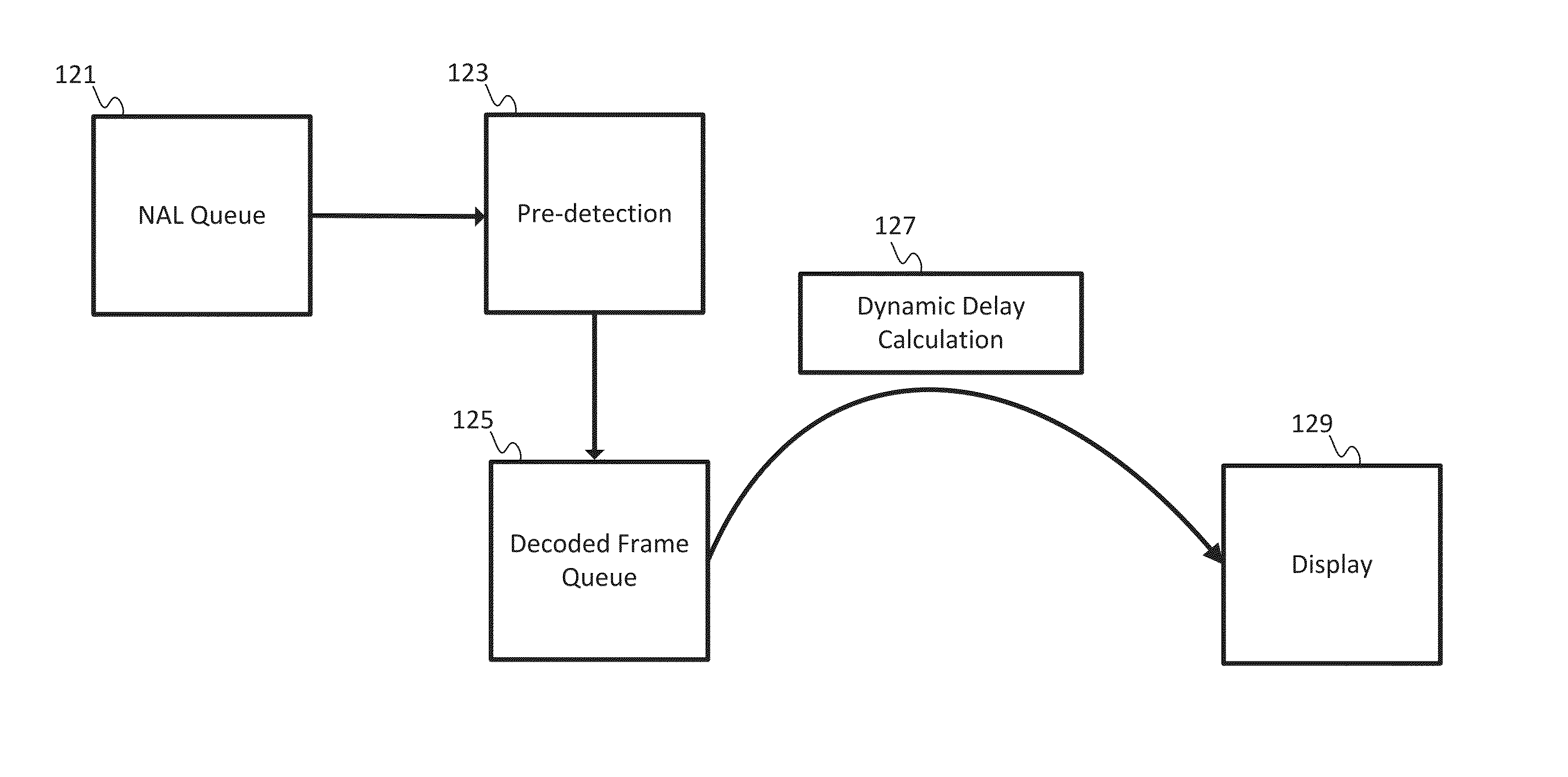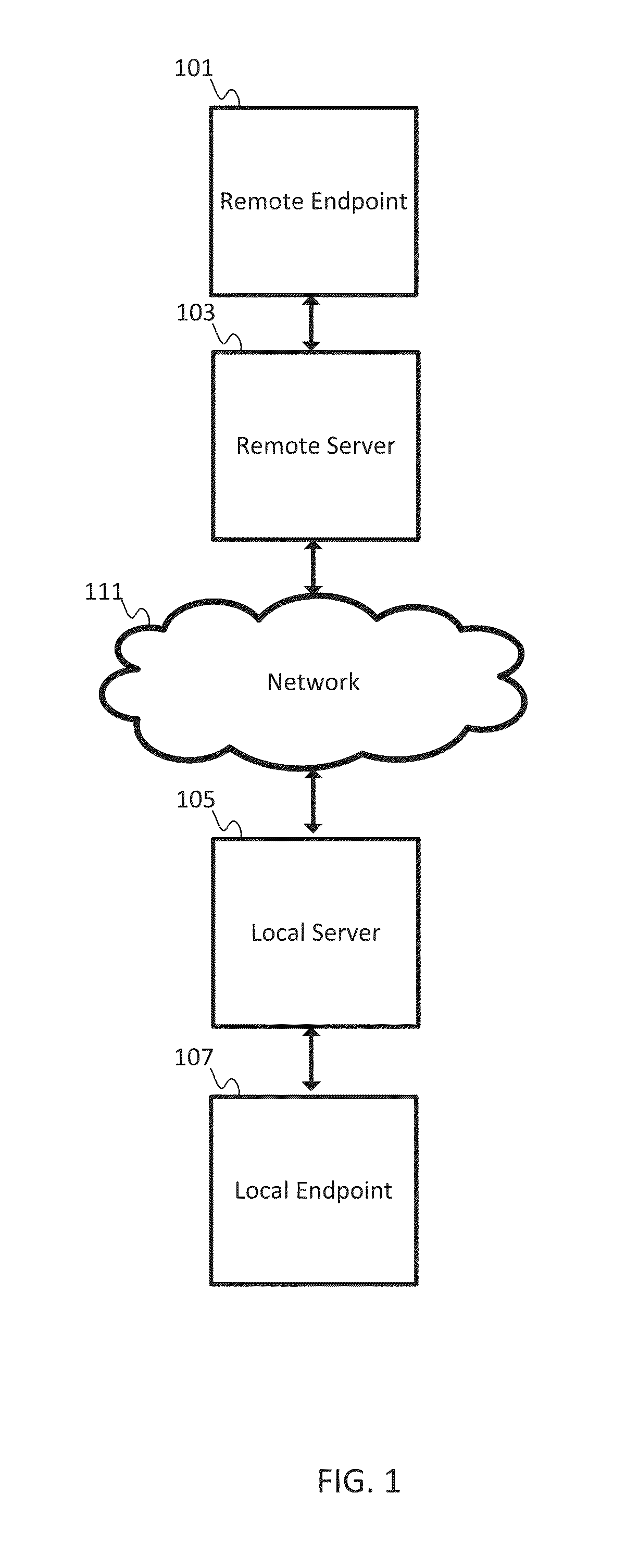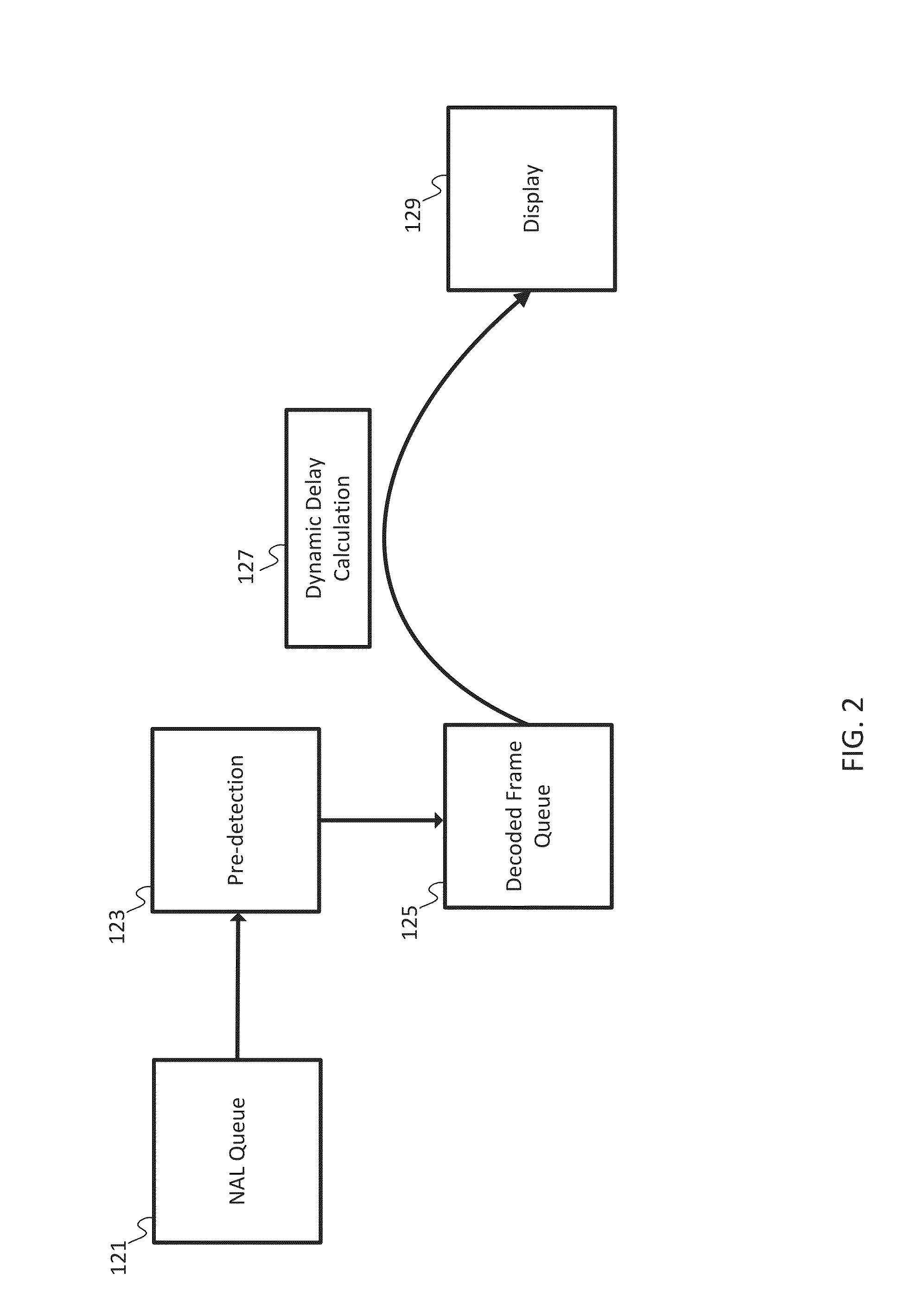Delay Tolerant Decoder
a delay-tolerant decoder and decoding technology, applied in the field of video decoding, can solve problems such as device malfunction, data stream data stream errors, and delay, and achieve the effects of reducing the number of decoders
- Summary
- Abstract
- Description
- Claims
- Application Information
AI Technical Summary
Benefits of technology
Problems solved by technology
Method used
Image
Examples
example embodiments
[0014]Real time video applications require fluid decoding and displaying. Real time video applications include video conferences, video streaming, television broadcasting, and other forms of communication. One example standard for the recording, compression, and distribution of video is H.264 / MPEG-4, which is described by the International Telecommunication Union Standardization Section (ITU-T) as T-REC-H.264-201304-I in April 2013 and available at http: / / www.itu.int / rec / T-REC-H.264-201304-I (“H.264”). Other video coding standards may be used. The video coding standard may organize data into network abstraction layer (NAL) units. A NAL unit is a packet that includes a specified number of bytes. The first byte is a header, which defines the type of data in the NAL unit, and the remaining bytes form the payload data of that type of data. Other packet formats may be used. The NAL unit structure may be a versatile format for use in both packet transport systems and bit stream transport ...
PUM
 Login to View More
Login to View More Abstract
Description
Claims
Application Information
 Login to View More
Login to View More - R&D
- Intellectual Property
- Life Sciences
- Materials
- Tech Scout
- Unparalleled Data Quality
- Higher Quality Content
- 60% Fewer Hallucinations
Browse by: Latest US Patents, China's latest patents, Technical Efficacy Thesaurus, Application Domain, Technology Topic, Popular Technical Reports.
© 2025 PatSnap. All rights reserved.Legal|Privacy policy|Modern Slavery Act Transparency Statement|Sitemap|About US| Contact US: help@patsnap.com



